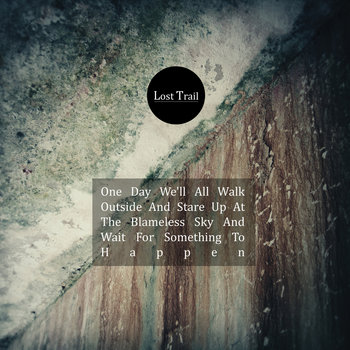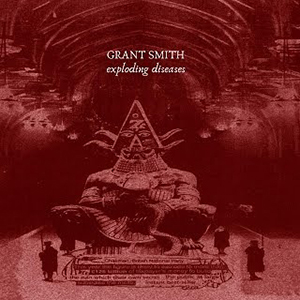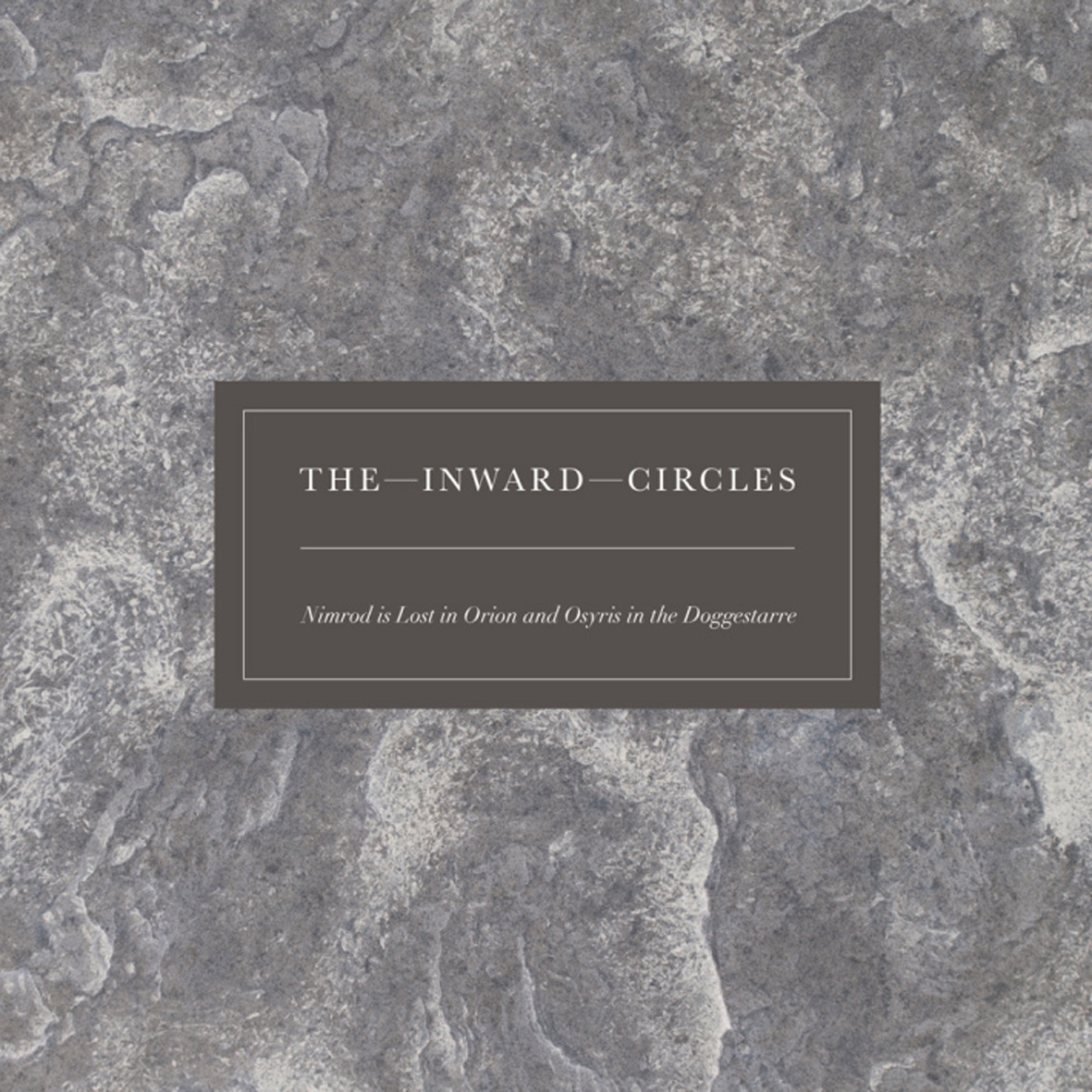- Administrator
- Albums and Singles
Recorded Nov/Dec 2014.
Title lifted from the Joan Didion book The Year of Magical Thinking. Thanks Joan.
Samples and more information are available here.

Read More
- Administrator
- Albums and Singles
"...And Wait For Something to Happen"
A dark, dark journey of spirits and alchemy conjured in the supernaturally hot, still spring of 2014 in Burlington, North Carolina, that haunted black X on the map buried deep in the Alamance foothills. These are the wailings of phantoms trapped beneath the floorboards and between the walls of our murky and crumbling 1910 home, buried on sleeping side-streets within a moment's reach of swarming, grasping woods. These are the sheets of rain swept in the doorway, the static churning of a possessed shortwave radio, the spitting demons of electricity and malfunction and broken, obsolete machines slowly giving way to organic sounds, light, an upward journey out of the very hands of night's oblivion and into more luminous, radiant decay. Here lies collapse, entropy, and rebirth.
More information can be found here and here.

Read More
- Administrator
- Albums and Singles

The latest sonic throw-down between Jim O'Rourke and Christoph Heemann; a state where it's almost impossible to determine who is responsible for what. The plastic people have melted together, that's why!
(Slightly) more information can be found here.
Read More
- Administrator
- Albums and Singles

After intense one-on-one dialogue with Heather Leigh on the label's renewed remit to present beautiful records that showcase all styles of "guitar" in all their extremities, Golden Lab is delighted to deliver to you what is, no question, an absolutely blinding example of just such a record.
A recording that captures Heather Leigh direct to cassette – one of those performances where the pedal steel was raging so hard that the vocals never had the opportunity to even make an appearance. Recorded in glorious mono and mastered to really bring out the harshness of those insane tones, the capturing of this performance to cassette gives the pedal steel an almost tape-like quality itself and its transfer to vinyl only warms it up further into a new zone of somehow cosy metallicism. This is an absolute joy – a real tear-yr-face-off record that sort of acts as a companion piece to HL's recent work w/ Stefan Jaworzyn in Annihilating Light. This won't stick around long.
More information can be found here.
Read More
- Administrator
- Albums and Singles

Jasmine Guffond is an original creator of conceptual sound. This first output under her own name is its own study, and if you've heard her former projects Jasmina Maschina or Minit, you should not be surprised at the different driving force and fresh structure of sound behind this new venture. However, if you're anticipating veins of clean, melodious folk or purely experimental electronic, you should shift your expectations.
Yellow Bell presents a broad spectrum of musicality, floating within hazy electronics, lost vocals, and ambient dimensions. The balance of digital synthesizer, loops, processed voice, and guitar creates a meticulous soundscape that both intrigues and calms. With its delicacy and immediacy, Yellow Bell distorts the perception of time and creates an environment for engagement and understanding.
While creating its own memorable dynamic, Yellow Bell resonates with the delayed endlessness of Grouper or lovesliescrushing and touches on the early electronic sounds of Musique concrète.
More information can be found here.
Read More
- Administrator
- Albums and Singles

166 minutes with
Charlemagne Palestine: piano Bösendorfer, orgue Yamaha and voice
Rhys Chatham: trumpet, loop pedal, electric guitar.
This is the first recorded collaboration between Charlemagne Palestine and Rhys Chatham. And it's precious. After the musical meetings with Tony Conrad (SR204) and Z'ev (SR340), these new Sub Rosa sessions create a form of trilogy.
More information can be found here.
Read More
- Administrator
- Albums and Singles

Sometimes I wonder why the rest of the world does not seem to appreciate the singular genius of Colleen Kinsella and Caleb Mulkerin like I do.  Other times, an album like this comes along and reminds me how truly unhinged, prickly, and unsuited for mass consumption the duo can be and everything makes sense once more.  Given the diversity and volume of Big Blood's output to date, it is hard to say just how dramatic a divergence Unlikely Mothers actually is, but I normally associate the band with a uniquely raw, primal, and art-damaged strain of folk that defies easy categorization.  Unlikely Mothers also defies easy categorization, but calls to mind some sort of primitive, sludgy, and bass-driven strain of '70s hard rock.  Some of the grooves achieve an unexpectedly hypnotic momentum or bracing, wild-eyed power, but the shrillness and single-mindedness of some these pieces can definitely make for a rough ride.
I have wrestled with what to say about this particular album for months, which I find very amusing given that Unlikely Mothers was probably composed and recorded in significantly less time than that.  I do not mean that as a critique, as Big Blood's intention very clearly seems to have been to unleash something loose, spontaneous, and different (and Unlikely Mothers is certainly all of those things).  What troubled me instead was that a band I love made an album that I found very hard to embrace, yet they themselves thought enough of it to make it one of their more high-profile, widely distributed albums (plenty of perfectly fine Big Blood albums have historically gone into the world as self-released cassettes or CDRs).  Consequently, I figured that I was probably missing something significant and just needed to hear the album enough to unlock its secrets.  Now that I have listened to it quite a lot, I can safely say that Unlikely Mothers probably has no secret layers or great buried melodies to uncover, but that it is nonetheless an admirable and unique experiment.  It just is not one for me.
With just a couple of exceptions, these nine songs are basically all grooves built upon a single promising riff.  Most of the riffs are admittedly cool ones, particularly the bass lines in "Steppin’ Time, Pt. II" and "Watery Down, Pt. II," but those riffs rarely make the leap from "great groove" to "great song," a problem compounded by some rather indulgent song lengths.  It takes quite an exceptional vamp to hold my attention for ten solid minutes and Big Blood are unlikely to dethrone Fela Kuti in that regard any time soon, though the 15-minute closer (the aforementioned "Watery Down, Pt. II") admittedly works quite well.  Still, if a bunch of simple, fuzzed-out bass riffs was all Unlikely Mothers had to offer, it would be fairly easy to dismiss.  It is not easy to dismiss at all, however.  Some of that success is certainly due to some neat details (the primal, clattering drums in "Thumbnail Moon," the lazy psychedelic guitar meandering in "Watery Down, Pt. II," etc.) and some occasional strong melodies and songcraft ("Watery Down" yet again).  Most of the album's success, however, is due to the duo's decidedly unique aesthetic.
Quite simply, Unlikely Mothers sounds like the work of some kind of isolated, backwoods cult that has largely spent the last few decades consuming massive amounts of peyote, reading arcane books, and listening to Sabbath and Dead Moon.  In fact, I suspect this album sounds far more like a weird backwoods cult than an actual weird backwoods cult would sound.  Caleb and Colleen have always sounded delightfully ragged, but Mothers takes that tendency and amplifies it to a raucous, stomping, religious fervor.  While there are a few oases of genuine beauty to be found in these songs, the emphasis is much more on trancelike repetition and frayed abandon (Kinsella often sounds more like a banshee than a Siren this time around).
The tragedy here is that I am perfectly fine with absolutely all of that: I am quite happy to follow Big Blood as far out on their weird, precarious limb as they want to go.  In fact, I think Unlikely Mothers is a legitimate stylistic triumph, as it all sounds genuinely fiery, gut-level, and half-crazed without a trace of irony, artifice, or artistic detachment to be found.  I love that.  I just wish that the duo's shriller, more unhinged tendencies had been better balanced with strong melodic hooks (Big Blood are historically very good at finding ways to present beautiful melodies with sharp edges).  The most perplexing thing of all is that at least some of these songs are reworkings of older pieces (both "Away" and "Leviathan Song" previously surfaced on Old Time Primitives, for example).  If cannibalizing pre-existing songs was fair game, it seems like Unlikely Mothers could have been forged from much stronger raw material than it was.  Perhaps these were all chosen for thematic reasons (the title refers to the fact that both Kinsella's mother and her aunt were nuns), but I was unable to find any kind of overarching narrative thread or theme in the songs as a listener.  Consequently, this album feel like an exasperating missed opportunity to me, albeit a wonderfully wild and divergent one.  A better album than this one can definitely be made in this vein.  That said, however, both halves of "Watery Down" rank comfortably among Big Blood's finest work, so apparently even a somewhat frustrating Big Blood album is still good for roughly 20 minutes of sublime greatness.
 
Read More
- Administrator
- Albums and Singles
 A reissue of a self-release from the enigmatic Grant Smith, the sound on this disc fits squarely in the world of guitar noise, but with a significant amount of development and variation within each of its six untitled segments. Sometimes harsh, sometimes pensive, and sometimes melodic, it results in a wonderful, mysterious album that is enjoyably unpredictable.
A reissue of a self-release from the enigmatic Grant Smith, the sound on this disc fits squarely in the world of guitar noise, but with a significant amount of development and variation within each of its six untitled segments. Sometimes harsh, sometimes pensive, and sometimes melodic, it results in a wonderful, mysterious album that is enjoyably unpredictable.
The only overarching theme that seems to be prevalent on Exploding Diseases is a progression from harsher material into more meditative and hypnotic passages.The first segment opens with a deep, subterranean grinding noise that is likely guitar, but has a raw and otherworldly quality to it.Eventually Smith brings in a more standard sounding guitar layer, but with surges of a harsh and unidentifiable noise that balances out the familiar sounds very well.
Moving into the second piece, the overall structure continues with a power electronics bass crunch that would not be out of place on a Brighter Death Now record.The rawness is still present, but dialed back a bit and mixed with a layer of echoing, wobbly guitar noise.It might not be aggressive, but there is a bleak malevolence behind it.The fuzzy bass throb of the third part only slightly serves to obscure Smith’s introduction of an otherworldly melody low in the mix, a hint of what is to come on the album.
The melody was just a teaser, because the following piece leads off with a sharper noise sound that is far more abrasive than what preceded it.The piece may not be musical at all on the surface, but he keeps a churning vibration going that gives it at least a sense of rhythm, even if that is just undone by its grimy and nasty conclusion.
The final two segments are where Smith allows the more peaceful and meditative sounds shine through.The fifth piece opens with an ambient expanse:slowly humming guitar feedback results in a softer sound, and even with the distorted bassy loops, the whole thing is hypnotically droning.In a way, it is like the best moments of Spacemen 3 but more dissonant.The final piece is culled from a similar template, with a little more emphasis on the bass and noise.Kept at bay below the distorted stuff is a melodic loop that again offsets the noisy moments with something more melodic and engaging.
This is an obscure album from an enigmatic artist:there are no credits on the sleeve, and I could not find much information about him or his previous work via a quick Google search.That obscurity though makes Exploding Diseases even more captivating, like a lost artifact of brilliance that seemingly appeared out of nowhere.The mystery is not necessary to fully appreciate the album though, as the music stands on its own strongly.
samples:
 
Read More
- Administrator
- Albums and Singles
 Will Thomas Long has been less prolific as of late with material as Celer, his minimal ambient project. That longer space between releases has made each one all the more memorable, and that is no different with Sky Limits. Even though it is conceptually about the ephemeral nature of life and experiences, stopping to listen to these quiet pieces makes for a great metaphor of life on a grander scale.
Will Thomas Long has been less prolific as of late with material as Celer, his minimal ambient project. That longer space between releases has made each one all the more memorable, and that is no different with Sky Limits. Even though it is conceptually about the ephemeral nature of life and experiences, stopping to listen to these quiet pieces makes for a great metaphor of life on a grander scale.
The composed pieces are consistent with what Long has done as Celer for years.Long constructs "Circle Routes" entirely of gliding tones and expansive electronics.Layered and slow, the piece is gentle, but commands attention and never becomes dull."In Plum and Magenta" features Long working in similar methods, but scaled back to be somewhat sparser, still conveying the same pensive emotions however.
The sound becomes a bit more intense on the middle pieces of the album, however."Tangent Lines" has a sound that is more commanding and dense, a cinematic heaviness that conveys drama expertly.Long keeps the electronics heavy on the following "Equal to Moments of Completion," emphasizing the lower end and creating an even greater sense of bombast.
In a similarly cinematic manner, the final two pieces have the sound retreating to a more gentle, placid conclusion."Wishes to Prolong" floats more than looms, slowly whisping away its calm tones and melodies.The concluding "Attempts to Make Time Pass Differently" has Long working with a similar ghostly feel, but enhances it with a rich, slow driving expanse of tones.The closing minutes go to near silence, requiring focus and dedicated attention to fully appreciate.
With the whole of the album inspired by daily life in Japan, the six major pieces of music are interspersed with field recordings of mundane life:watching television while drinking tea, traveling on a train, or simply the sounds outside.Kept at a low volume level, it requires deliberate focus to be able to fully hear what is going on, a great metaphor for the rest of life.
Will Thomas Long's use of sparse and minimal electronics throughout Sky Limits should be of no surprise to anyone with even a passing familiarity with Celer's work.Weaved together with the bits of field recordings, the album almost becomes an anti-narrative.Unlike something of high concept and drama, the sounds are more about observing and appreciating the richness in the mundane, the every day experiences people ignore in the search for something bigger or more grandiose.
samples:
 
Read More
- Administrator
- Albums and Singles
 It has been quite a long wait since the last proper Black To Comm album (2009's wonderful Alphabet 1968), so it was an absolute delight to have Marc Richter unexpectedly re-surface in December with an inspired return to form (and one of the year’s finest and most singular albums).  While this latest release understandably bears almost no resemblance to Marc’s decidedly outré soundtrack for EARTH (2012), it also does not seem to follow any obvious, linear progression from his previous work either. Black To Comm is its own self-contained, anomalous world of vibrant, hallucinatory sound art brilliance, resembling nothing less than the beautiful nexus where drone, space rock, psychedelia, and the flickering unreality of late-night semi-consciousness meet.
It has been quite a long wait since the last proper Black To Comm album (2009's wonderful Alphabet 1968), so it was an absolute delight to have Marc Richter unexpectedly re-surface in December with an inspired return to form (and one of the year’s finest and most singular albums).  While this latest release understandably bears almost no resemblance to Marc’s decidedly outré soundtrack for EARTH (2012), it also does not seem to follow any obvious, linear progression from his previous work either. Black To Comm is its own self-contained, anomalous world of vibrant, hallucinatory sound art brilliance, resembling nothing less than the beautiful nexus where drone, space rock, psychedelia, and the flickering unreality of late-night semi-consciousness meet.
Richter does not waste any time at all in wrong-footing any listeners expecting a traditional drone album with this effort, as the beautifully woozy, shimmering, and squiggly synths of "Human Ghidrah" are relegated to the background by a bizarre (and impassioned) metaphysical spoken word performance that resembles late-night TV televangelism.  The speaker is definitely not a televangelist though, as a televangelist would never urge me to grab my own anus and pull myself inside-out like this guy does.  While no other pieces feature spoken-word other than the similarly unhinged closer ("Them"), "Human Ghidrah" sets an ambitiously unpredictable tone for the album that Richter does not waver from.  Also, the spoken-word bits are an admirably bold move on Richter’s part, as he deflects the focus from some rather beautiful underlying music, opting to embrace the weird and unexpected rather than settling for just an excellent drone piece.
None of the eight pieces spanning Black To Comm share much in common in any specific sense, but they all display a similarly original vision and similarly ingenious construction.  The most instantly gratifying and accessible highlight is the effortlessly epic and haunting "Hands," which is probably the compositional high-water mark of Richter's career: its garbled and processed vocal melody, elegiac piano chords, swooping synthesizers, and surreal array of peripheral sounds seem to condense the beginning and end of an entire world into just under 5 minutes.  While nothing else on the album quite rivals that spectacular achievement, a few pieces come quite close.  For example, the 20-minute "Is Nowhere" is an absolute monster of a drone piece, effectively enhancing its fragile, haunting central motif with field recordings before bulldozing it all with some wonderfully harsh, gnarled synthesizers.  The aforementioned "Them" is yet another highlight, achieving nearly 15 minutes of sputtering, hallucinatory, and otherworldly grandeur before its deeply strange vocal catharsis erupts.
The remaining four pieces are similarly interesting and enjoyable, despite being somewhat less audacious in scope.  "Spectre Teeth," for example, is a buzzing, Middle Eastern-tinged drone piece featuring still more eerily tweaked vocals, while the heavy, engulfing thrum and exotic vocals of "1975" sound like the crescendo of an especially deranged and ambitious prog album.  Later, "Fackeln in Sturm" unfolds a subtly lysergic array of shimmers, swells, and warped vocals over an echoey krautrock-meets-dub groove.  Not to be left out, the remaining "Spiralen Der Errinerung" is possibly more bizarre than anything else on the album, resembling nothing less than some kind of ancient and deeply hallucinatory religious ceremony half-heard through heavy metallic grinding and something that sounds like heavily amplified Tibetan throat-singing.
At the risk of sounding somewhat hyperbolic, Black To Comm truly is a staggering and singular achievement and it is one that only could have come from Marc Richter: there are so many bewildering artistic choices, odd juxtapositions, eclectic influences, and disparate threads on display here that it is a marvel that it all works so well and feels so perversely natural.  I was also struck by how disorientingly timeless the album feels.  While the technology, techniques, and some of the influences certainly come from Earth (the planet) circa 2014, the music somehow always sounds completely unstuck in both time and place, seamlessly evoking at various points a lonely organist in an empty church, snatches of particularly weird half-remembered dreams, ancient cults, or something completely otherworldly altogether (and all while never lapsing into anything remotely mundane, derivative, or easily recognizable).  I truly cannot say enough good things about this album, as Richter has delivered a legitimate, unqualified, start-to-finish masterpiece.  This was my personal favorite release of 2014 by a landslide.
 
Read More
- Administrator
- Albums and Singles

Richard Skelton has a long history of shifting monikers, unusual concepts, and stylistic evolutions, but this latest project still came as a bit of a surprise to me, as it does not particularly sound like a Richard Skelton album at all.  Not at first, anyway.  Rather, it sounds a bit like a warmer variation on classic Lustmord or one of Steve Roach's space-themed albums–a far cry from Skelton's vibrant and organic signature blend of bow-scrapes and rich, shimmering harmonics.  After a few listens, however, it becomes evident that Skelton's aesthetic is still perfectly intact, but has been slowed down and stretched to something approximating geologic time (appropriate, given his well-documented non-musical interests).  While Nimrod is definitely not representative of what Richard historically does best, it is nevertheless a deep and absorbing listen, boasting at least one piece that is probably as great as anything in the space music canon.
There are many aspects of Skelton's artistry that I find endearing, but one of the less obvious ones is that it feels like his recent music is only the tip of an intriguingly cryptic and deeply personal iceberg.  I also appreciate that he only seems to surface these days when he has something new and unusual to say.  Exactly what he is saying, of course, usually remains a pleasant mystery to me, but Richard certainly cannot be faulted for failing to provide enough supporting information.  As with many recent Skelton efforts, Nimrod's music is closely intertwined with text–in this case, an evocative book of re-purposed literary quotations (Da Vinci, Christina Rossetti, Rilke, etc.), close-up photography of bark patterns, and word-collages rooted in detourned forestry documents.  Surprisingly, given the album's title and the actual music, the writings are mostly a fairly earthbound (albeit eclectic) series of meditations on trees, light, shadow, the sea, and solitude.  The album and song titles, on the other hand, are all tied to the writings of English polymath Sir Thomas Browne, so I suspect everything ultimately traces back to him in some way.
Musically, Nimrod generally resembles a Richard Skelton album being played at a much slower speed and deeper pitch.  I have no clue how the album was constructed, but there is little that can be readily identified as violin or bowed guitar, though the sounds could have certainly originated from either (and then been laptopped into unrecognizability).  In a more specific sense, most of Nimrod sounds like warm, layered, slow-moving drone swells made from a cello or double-bass.  That is certainly pleasant, but the album's best pieces merely use that as the starting point for something a bit more unique and mesmerizing.  "Ancient Arithmetic of the Hand," for example, augments its dreamy thrum with a ghostly, quavering haze and a deep, insistent throb, while "Glimpses Of The Empyreal Light" sounds like an older-style Skelton piece beset by ominous, subterranean shudders.
Nimrod's two highlights are even more radical in their transformation of Skelton's aesthetic.  "Two Opposed Leaves At The Root" is the album's masterpiece, weirdly reminding me of Aphex Twin's wheezing, lurching NIN remix (in name, at least) "At The Heart Of It All," which is not at all something I would normally expect to be referencing in regards to a Richard Skelton album.  Remarkably, Skelton manages to one-up Richard James though, as the pulse of "Two Leaves" transcends mere rhythm to sound like something enormous and metal being endlessly bent and crushed by powerful exterior forces.  I have never heard anything else quite like it and it is absolutely beautiful in its context.  "And In Their Groves Of The Sun This Was A Fit Number" is not quite that stunning or unique, but works on a similarly grand scale.  In fact, there is even some similar crunching, but it is quite distant and strangely soothing as it is slowly enveloped by the piece's warm, engulfing roar.
I would not necessarily say that there are any weak pieces at all on Nimrod, but the album’s lengthiest work ("An Art to Make Dust of All Things") seems comparatively uninspired to me, as its cold emptiness and deep metallic swells seem too much like the territory of previous space-minded ambient artists without any substantial improvement upon the formula (though it was bit surprising to hear a (buried) percussion loop).  It is a perfectly fine piece, but it just does not feel like it belongs on this particular album by this particular artist.  In all other respects, however, Nimrod is an absolutely wonderful, beautifully realized, and unexpected album (and "Two Leaves" is easily one of the finest pieces in Skelton's entire discography).
- An Art to Make Dust of All Things
- Two Opposed Leaves at the Root
- And in their Groves of the Sun This Was a Fit Number
 
Read More

